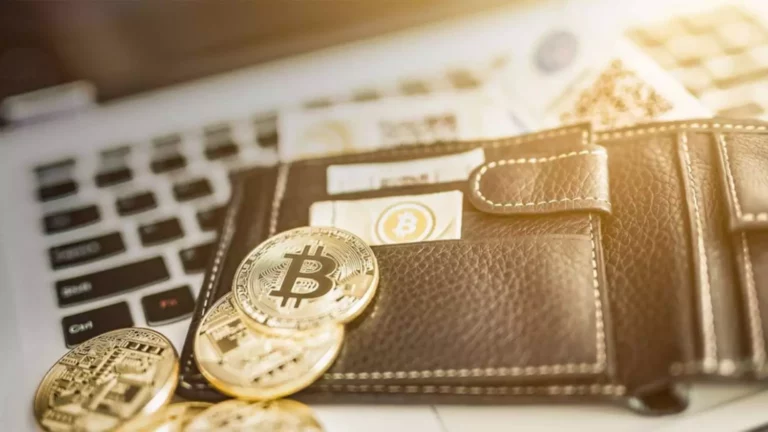While IL is an inherent risk to traders when providing liquidity to pools, there are strategies they might employ to reduce their exposure and mitigate its impact. AMM is probably the most common use case for liquidity pools, but it’s not limited to that only. Although liquidity pools clearly provide numerous advantages and top-quality applications, they also carry significant drawbacks. There are probably many more uses for liquidity pools that are yet to be uncovered, and it’s all up to the ingenuity of DeFi developers. So far, we’ve mostly discussed AMMs, which have been the most popular use of liquidity pools.
This program, however, was retired when markets faced turmoil in 2022, arguably the exact kind of unforeseen fallout the provisions were designed to protect against. Yield farming allows additional incentivization methods to motivate liquidity providers to lock tokens in smart contracts of particular “incentivized pools”. As liquidity providers usually distribute their funds to liquidity pools with the highest yield, DeFi exchanges can control liquidity provision to some extent.
DeFi Yield Protocol
This means you could swap MATIC (Polygon) with BUSD (Binance Smart Chain) without needing to complete multiple exchanges. This opens the doors to experienced traders who want to deploy advanced charts and technical indicators. Additionally, Best DEX will provide token sentiment scores, highlighting whether the broader markets are bullish or bearish on each project. Imagine a trader provides liquidity to a token pair pool that consists of equal amounts of ETH and a newly launched altcoin.
- Compared to “hodling,” this kind of loss results in a monetary loss.
- Its decentralized exchange – which is called Best DEX, supports two blockchain networks – Ethereum and Binance Smart Chain.
- It occurs when the value of the tokens inside a liquidity pool diverges, leading to a potential loss compared to simply holding the tokens.
- However, this is no longer the case – as national regulators have since clamped down on anonymous P2P trading.
- When you decide to sell the tokens acquired as liquidity mining rewards, any profit made relative to their value upon receipt may be subject to Capital Gains Tax.
- Uniswap is also one of the best no KYC crypto exchanges to consider today.
- Businesses could, therefore, quickly assist consumers with paying, exchanging, or receiving various tokens in a single transaction.
However, this could mean fewer rewards for people adding liquidity. Liquidity pools play a crucial role in yield farming, DAOs, synthetic assets, blockchain gaming, on-chain insurance, etc. Liquidity pools are just a collection of crypto funds and assets locked in a smart contract.
Kyber Network
A more serious breach could have leaked additional personal data, such as home addresses, dates of birth, and KYC documentation. Fortunately, no KYC crypto exchanges do not collect personal data or verification documents, so data leaks are not a risk. When it comes to usability, Raydium is aimed at users who want to trade crypto anonymously.

The reason for this is that decentralized exchanges only handle crypto-asset trading. Although you might come across a decentralized exchange that facilitates fiat payments, this will go through a third party that will have its own KYC processes. Therefore, no KYC exchanges are perfectly legal and safe – but you can only trade cryptocurrencies anonymously. That said, even if you’re not planning to deposit fiat money, the world’s largest exchanges now require KYC processes before you can trade. For example, Binance previously allowed users to trade cryptocurrencies anonymously up to a certain trading volume.
What are Liquidity Pools in Crypto?
This enables you to earn a share of trading fees when you provide liquidity to the exchange. SushiSwap is another option to consider when searching for a cryptocurrency exchange without KYC. You can trade thousands of ERC20 tokens without needing to register an account or provide any verification documents. There’s no need to make a deposit either – as swaps are processed via your crypto wallet. Having researched the best no KYC crypto exchanges extensively, Best Wallet is our top pick.

Businesses could, therefore, quickly assist consumers with paying, exchanging, or receiving various tokens in a single transaction. They obtain assets from Liquidity Pools in Crypto a liquidity pool that has already been funded. A typical liquidity pool encourages and compensates its members for depositing digital assets in the pool.
DeFi Related News
So, one way to earn is by adding liquidity to the third-party Dapps. Buying this token will allow you to take governance decisions for the platform while earning rewards. Before we jump into the specifics of each, let’s quickly go over the basics of liquidity pools. If you want to learn more about cryptocurrencies, you should consider taking some lessons.

SoFi has no control over the content, products or services offered nor the security or privacy of information transmitted to others via their website. We recommend that you review the privacy policy of the site you are entering. SoFi does not guarantee or endorse the products, information or recommendations provided in any third party website. While these typically don’t pertain to liquidity mining, in ambiguous situations, consulting professional legal and tax experts is advised.
Crypto Liquidity Pools: UK Taxation Guide
One of the first protocols to use liquidity pools was Bancor, but the concept gained more attention with the popularization of Uniswap. Some other popular exchanges that use liquidity pools on Ethereum are SushiSwap, Curve, and Balancer. Similar equivalents on BNB Chain are PancakeSwap, BakerySwap, and BurgerSwap, where the pools https://www.xcritical.com/ contain BEP-20 tokens. Firstly, the act of depositing tokens into a liquidity pool and receiving pool tokens in return is considered a ‘disposal’ by the HMRC. You can swap any supported tokens on these networks at the click of a button. Like Uniswap, PancakeSwap does not require you to open an account or provide personal data.

While companies can, of course, still provide liquidity to pools, the innovation is in allowing anyone to do so without the need for permission. If there’s no huge sell order to match a huge buy order, a thinly traded token’s price will skyrocket, and vice versa. Another limitation of basic liquidity pools is that they are two-sided. For that reason, Balancer invented another protocol allowing up to eight assets in a pool. Whilst basic liquidity pools usually use simple mathematical relationships, Balancer uses the more complex constant mean formula. Other than that, the platform offers competitive fees and has many other features and options to explore.
Conclusion: Navigating Impermanent Loss in DeFi
You may even decide to sign up for some blockchain certification programs if you want to become a professional in the cryptocurrency industry. A blockchain analytics tool called Nansen discovered that 42% of yield farmers who contribute liquidity to a pool on launch day leave the pool within a day. Then, you need to confirm that you have the appropriate amount for the two assets you intend to deposit. Liquidity pools play a prominent role in creating a decentralized finance (DeFi) system, which is gaining more and more popularity in the crypto sphere.
Role of Liquidity Pool in DeFi
To understand how liquidity pools are different, let’s look at the fundamental building block of electronic trading – the order book. Simply put, the order book is a collection of the currently open orders for a given market. Blockpit creates the most comprehensive crypto tax reports in PDF format. The report provides information about all your balances and transactions and can be used as proof of origin with banks or tax advisors.
After connecting your wallet to the PancakeSwap website, you can begin trading. After completing a trade, the respective tokens will be deposited into your wallet. Uniswap is also one of the best no KYC crypto exchanges to consider today.




